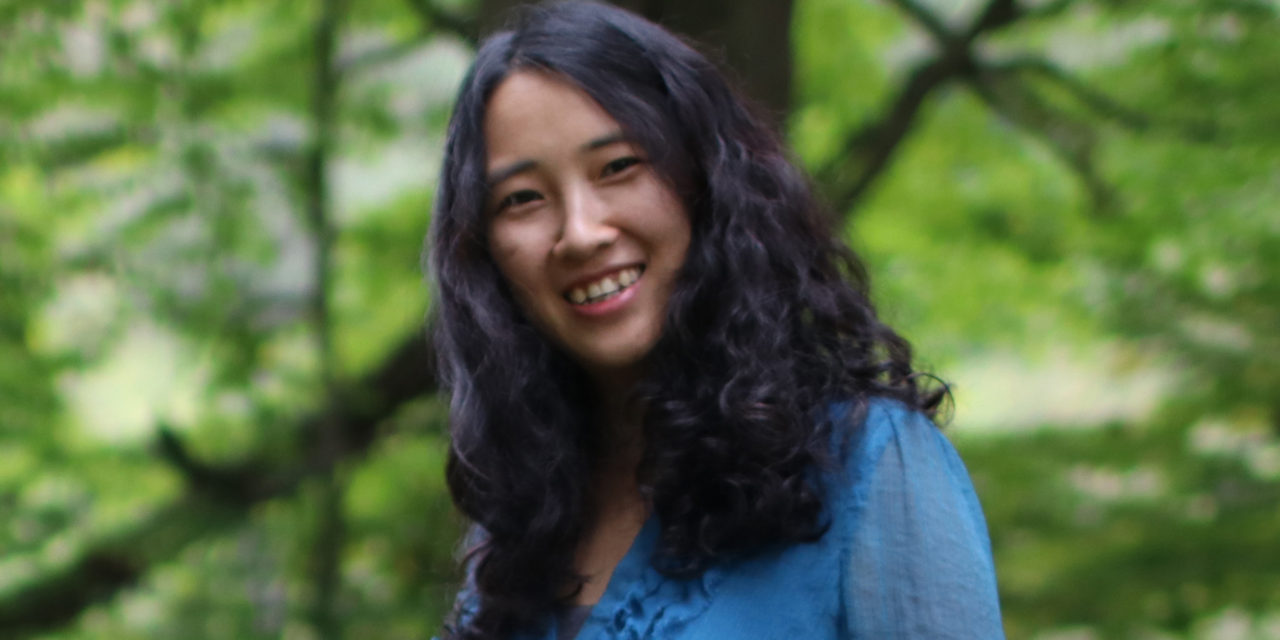
Assistant Editor Madeleine Wattenberg: Translations aren’t exactly time machines—they don’t transport us back to the source context or language just by our reading them—yet they can move us from familiar fields of knowledge into the unfamiliar. It’s particularly impressive when this movement occurs across a short word count, as in these two essays by eighteenth-century scholar Ji Yun. Readers must counter assumptions about who provides narrative resolution (“Surely there is some conclusion we’re meant to come to”) and begin new understandings of old symbols (such as the “mysterious creature called a ‘lion’”) as meaning accumulates and distills through the language.
To hear John Yu Branscum read “Twice Goodbye,” click below:
Twice Goodbye
Lady Zhao, the wife of my second son, Ruchuan, was a sensitive and enchanting young woman—one of those people who make you glad to be near them.
My wife, Mistress Ma, continually boasted to others about Lady Zhao’s character and literary talent, as well as her needlework. She said that Lady Zhao talked with such charm that one could happily listen to her for a whole day. This was all true. We could not have hoped for a better daughter-in-law.
So, when Lady Zhao died at only thirty-three years of age, I received a wound that still aches when I think of her. But my pain was nothing compared to what Ruchuan suffered. For many years, he mourned pitifully. Then one year he was ordered to temporarily move to Hubei to undertake some professional duties. While there, he entered a new relationship.
The first time I saw this woman upon Ruchuan’s return, I was too shocked to speak. She looked just like Lady Zhao—the shape and length of her limbs, the flicker of her smile, how she moved—everything exactly the same. Ruchuan’s coworkers were as stunned as me and drilled him about the woman’s relatives and her birth details, suspecting that she was a reincarnation. But it turned out that the woman was born well before Lady Zhao died.
That two women should so resemble one another—down to marrying the same man—is a coincidence with a pulse and meaning. This is especially apparent when you consider their last point of similarity, which is this: only a few months after joining Ruchuan’s household, this new woman also died very young and unexpectedly. What can one make of these women’s similarities? Why does Heaven copy some things and then introduce them into our lives repeatedly so that we continually meet the same person or experience the same disaster? Surely there is some conclusion we’re meant to come to.
To hear Yi Izzy Yu read “The Ringing of the Western Beast,” click below:
The Ringing of the Western Beast
About 150 years ago, in the fourteenth year of Emperor Kangxi’s reign, a Western nation gave him a mysterious creature called a “lion.” No one in his circle had ever seen such a creature before, and it immediately featured prominently in the poetry and paintings produced by members of the court. It also featured in many tall tales. For example, one story that made the rounds detailed how the lion escaped the palace one morning by snapping its chains in half and then galloping so fast that it reached the far end of the Great Wall, 2,800 li away, by noon—a feat well beyond even the fastest horse.
This is obviously a made-up tale. There are, however, true tales about the lion that are equally striking. For instance, one summer the emperor visited the southern regions and displayed the lion as a show of his power. While sailing back home on the Wei River, he temporarily docked in the village of my maternal grandmother, the Madame Cao. This gave her the opportunity to observe the lion firsthand from her family’s home, the deck of which faced the riverside.
Madame Cao reported that the lion’s body was like a pony-sized yellow dog’s, its tail tigerlike but longer, and that its face was disturbingly human—much rounder and flatter than that of other animals.
For the entirety of its stay, the lion was kept tethered to the main mast on the boat’s deck, and that’s where it was when a pig was dragged from the village to feed it. According to my grandmother, the pig squealed and struggled all the way to the lion, but then—as soon as its hooves struck the ship’s deck—all the fight left it, and it fell silent and limp. By the time the lion’s handlers used long poles to shove the pig toward the lion for it to sniff, the pig had already died of fright.
One must marvel at such a creature and the effect that it has on other creatures. The great painter Alibai, whose skills were as great as those of the ancient artists, tried to capture this presence after encountering the lion in person,. I eventually managed to buy his painting from my superior Bo Xizhai, who secured it from Alibai’s grandfather.
Unlike his other work, Alibai did not sign this painting with his name, nor give it a title.
There is one final detail to add to this account. While the boat was leaving my grandmother’s village, the lion let loose a pealing roar that echoed like hundreds of gongs. At the sound, the eleven horses in my grandmother’s stable trembled and lay down in the shadows for hours afterward, not daring to make any noise. This is why the lion is called a king.
Translators’ Statement: Although celebrated during the Qing dynasty as a brilliant scholar and a beautiful writer, today Ji Yun is sometimes dismissed as naïvely didactic. Therefore, in translating his work we especially sought to render the spare beauty of his prose and a tone that is everywhere colored by his Confucian pursuit of boxue, the broadening of one’s mind. Ultimately, we found it most useful to understand Ji Yun’s individual pieces as manifestations of a specific time and place, his greater body of work, and the play of a particular kind of mind.
Ji Yun / 纪昀 (1724-1805) was an acclaimed Chinese writer, scholar, and politician, who also served as chief editor for the Qing dynasty imperial library. In his later years, he quietly rebelled against this role by writing the five-volume collection Notes on the Subtle and the Strange. This twelve-hundred-piece collection includes Ji Yun’s personal experiences with the supernatural, his investigation of the strange experiences of friends and family members, and fables and parables that he felt revealed deep truths about the nature of reality.
Yi Izzy Yu loves the weird and teaches at Indiana University of Pennsylvania. Alongside her tulpa and collaborator, John Yu Branscum, she translates Chinese strange true tales at glitchpress.com. Her English-language work can be found online at Strange Horizons: Samovar, 3:AM Magazine, and DUSIE, and on her Facebook and Instagram pages.
Tulpa John Yu Branscum teaches at Indiana University of Pennsylvania, and he’s a corporate storyteller for the art/food company 盤吉米道. His work has appeared online in such journals as Hippocampus, 3:AM Magazine, Strange Horizons: Samovar, and North American Review.
For more miCRo pieces, CLICK HERE











